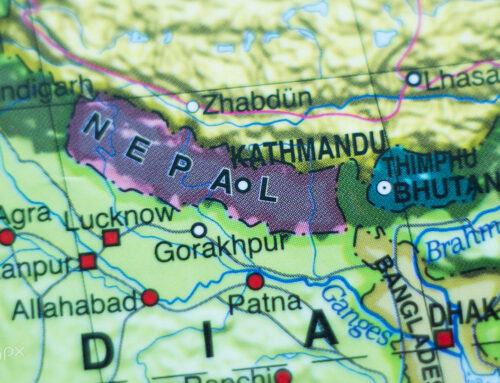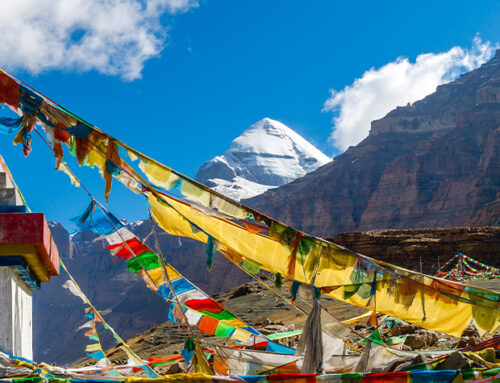Tibetan Buddhism is rich in symbolism, myth, and ancient traditions. One of the intriguing elements of this spiritual tradition is the role of nagas, serpent-like deities, and their significance in Tibetan Buddhist culture. This article explores the world of nagas in Tibetan Buddhism, shedding light on their origins, symbolism, and the vital role they play in both religious practices and environmental conservation.
The Origin of Nagas
Nagas, known as “lu” in Tibetan, are serpent spirits with a long history in Hinduism and Buddhism. The concept of nagas likely traces back to ancient snake cults in India, possibly dating to the Indus Valley civilization. Over time, these beliefs became integrated into Buddhist traditions, evolving into the unique form of nagas in Tibetan Buddhism.
The Role of Nagas in Tibetan Buddhism
Nagas are classified among the eight classes of gods and demons in Tibetan Buddhism. They are often revered as protectors of Dharma, the teachings of the Buddha. Nagas are believed to inhabit various environments, including oceans, rivers, lakes, and even trees. Some nagas are considered guardians of submerged treasures, both material and spiritual.
Nagas in Art and Iconography
In Tibetan Buddhist art, nagas are frequently depicted in their half-human, half-serpent form. They are adorned with jeweled crowns, ornaments, and often depicted holding treasures. These artistic representations reflect the intricate connection between spirituality and aesthetics in Tibetan Buddhism.
Naga Offerings and Environmental Conservation
Naga offerings hold a crucial place in Tibetan Buddhist rituals. They are made to seek the blessings of nagas and to heal water systems suffering from pollution and environmental degradation. These offerings also serve as a reminder of the interdependence between humans and nagas in the natural world.
Naga Buddha Statues: Symbolism and Significance
Naga Buddha statues are unique representations where the Buddha is sheltered by a Naga while meditating. These statues symbolize protection, with the Naga serving as a guardian and protector of the Buddha. Their significance lies in their representation of the Buddha’s enlightenment and the spiritual refuge provided by the awakened one.
The Connection Between Nagas and Water
Nagas’ association with water is profound. They are often considered water deities and are believed to reside in aquatic environments. This connection emphasizes the importance of water conservation and the need to protect our water sources in Tibetan Buddhist teachings.
The Tale of Mucalinda: Naga Protector of the Buddha
A famous story in Tibetan Buddhism recounts how King Mucalinda, a naga, protected the Buddha from a storm shortly after his enlightenment. This tale highlights the compassionate and protective nature of nagas in the Buddhist tradition.
Nagas in Tibetan Folklore
Beyond their role in religious practices, nagas also feature prominently in Tibetan folklore. These tales often depict nagas as intelligent and powerful beings with the ability to influence human affairs. Here is Lhasa we have many water well which are closely associate with Nagas, these well has to been careful maintained and kept clean. You will also hear story about Medrok Serchen who donate huge sum of wealth during the construction of Jokhang temple and he is also said to be patreon of Drikung thil monastery. You can visit his soul lake called Serchen Lhatso Lake in Lhasa.
Naga Puja: Rituals and Practices
Naga Puja is a significant ritual in Tibetan Buddhism dedicated to seeking the blessings of nagas and ensuring the well-being of water systems. It involves offerings, prayers, and ceremonies to appease and honor these serpent deities.
The Eight Great Naga Kings
Tibetan Buddhism recognizes the presence of eight great Naga Kings, each associated with a specific direction. These kings play a crucial role in Vajrayana practices and the preservation of Buddhist teachings.
Nagas and Environmental Awareness
The concept of nagas in Tibetan Buddhism underscores the importance of environmental awareness and respect for the natural world. It serves as a reminder of the interconnectedness between humans and the environment.
Conclusion
Nagas in Tibetan Buddhism represent a fascinating blend of spirituality, mythology, and environmental consciousness. Their role as protectors of Dharma and natural elements highlights their significance in both religious practices and the preservation of the planet.
FAQs
Who are the Nagas in Tibetan Buddhism?
They are serpent-like deities classified among the eight classes of gods and demons in Tibetan Buddhism. They play a protective role in Dharma and the environment.
What is the significance of Naga Buddha statues?
Naga Buddha statues symbolize the protection and refuge provided by the Buddha. They depict the Buddha meditating under the shelter of it, often King Mucalinda.
How do Nagas relate to environmental conservation?
They are associated with water and are believed to reside in aquatic environments. Tibetan Buddhists make offerings to nagas to seek their blessings for healing water systems and environmental preservation.
What is the story of King Mucalinda and the Buddha?
King Mucalinda, a naga, protected the Buddha from a storm shortly after his enlightenment. He shielded the Buddha with his hood to provide shelter from the elements, illustrating the protective and compassionate nature of nagas.
Why are Nagas important in Tibetan folklore?
Nagas often appear in Tibetan folklore as intelligent and powerful beings. They are believed to influence human affairs, making them significant figures in local stories and traditions.
In conclusion, nagas in Tibetan Buddhism offer a unique blend of spirituality, mythology, and environmental consciousness. Their presence in rituals, art, and folklore reflects their multifaceted role in the Tibetan Buddhist tradition, serving as protectors of both Dharma and the natural world.
About Tibet Travel & Tours
Tibet Travel & Tours is a local travel agency in Tibet that offers unique and authentic experiences to travelers from all around the world. As a leading tour operator in Tibet, we provide high-quality Tibet Travel services that are tailored to our clients’ needs and preferences.
Our team of experienced and knowledgeable professionals strives to ensure that our clients have a hassle-free and memorable Tibet tour. We specialize in various types of Tibet tour packages, including cultural tours, trekking and hiking tours, and adventure tours.
Our commitment to providing exceptional service has earned us a reputation as one of the best local travel agencies in Tibet. Contact us today to plan your unforgettable trip to Tibet.
Explore Tibet with a local Tibetan Travel Agency
If you’re looking to explore Tibet, starting your journey with a reputable Tibetan travel agency in Tibet is crucial. Tibet Travel & Tours is a great choice to begin your adventure with their extensive knowledge of the region and commitment to responsible tourism.
Their Tibet tour packages cater to a range of interests and budgets, making it easy to plan a trip that suits your needs. Before embarking on your tibet tour, it’s essential to have the right Tibet travel information and necessary documents, including a Tibet travel permit.
The Tibet Travel Planner provided by i-Tibet travel is an excellent resource to plan your trip, including tips on what to pack, where to stay, and what to see.
For beginners, the “About Tibet” guide provided by i-Tibet travel offers a comprehensive overview of the region’s history, culture, and top attractions. So, start your Tibet travel plan here with i-Tibet travel and discover the magic of Tibet for yourself.









